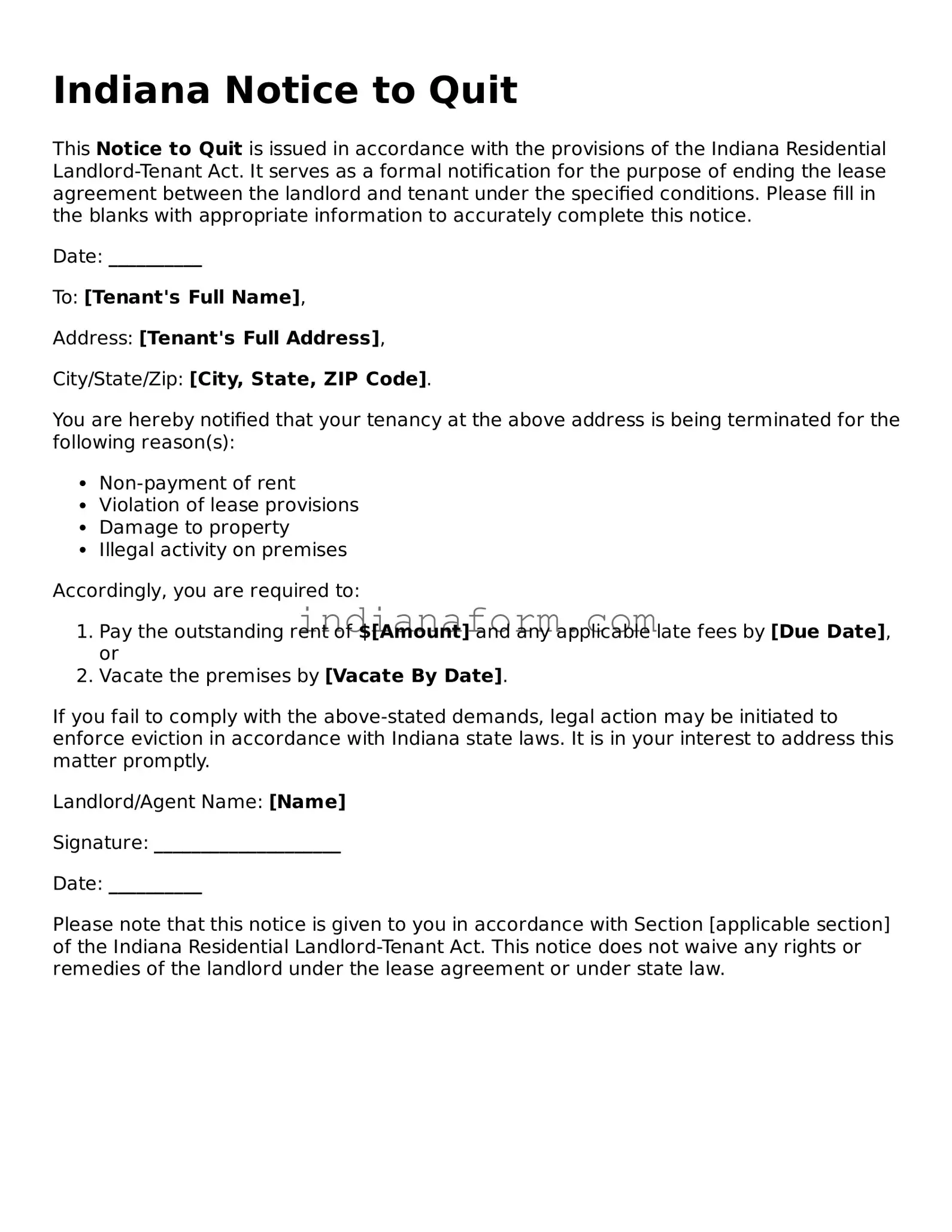Indiana Notice to Quit
This Notice to Quit is issued in accordance with the provisions of the Indiana Residential Landlord-Tenant Act. It serves as a formal notification for the purpose of ending the lease agreement between the landlord and tenant under the specified conditions. Please fill in the blanks with appropriate information to accurately complete this notice.
Date: __________
To: [Tenant's Full Name],
Address: [Tenant's Full Address],
City/State/Zip: [City, State, ZIP Code].
You are hereby notified that your tenancy at the above address is being terminated for the following reason(s):
- Non-payment of rent
- Violation of lease provisions
- Damage to property
- Illegal activity on premises
Accordingly, you are required to:
- Pay the outstanding rent of $[Amount] and any applicable late fees by [Due Date], or
- Vacate the premises by [Vacate By Date].
If you fail to comply with the above-stated demands, legal action may be initiated to enforce eviction in accordance with Indiana state laws. It is in your interest to address this matter promptly.
Landlord/Agent Name: [Name]
Signature: ____________________
Date: __________
Please note that this notice is given to you in accordance with Section [applicable section] of the Indiana Residential Landlord-Tenant Act. This notice does not waive any rights or remedies of the landlord under the lease agreement or under state law.
